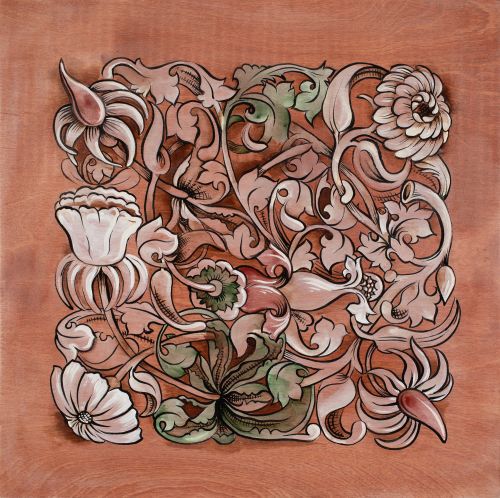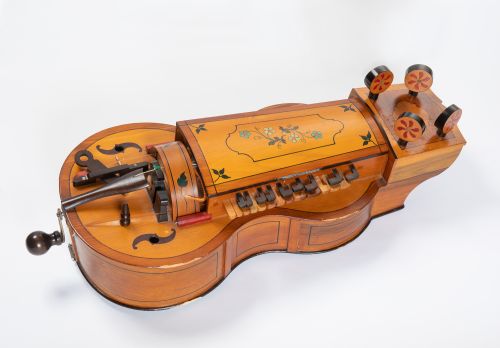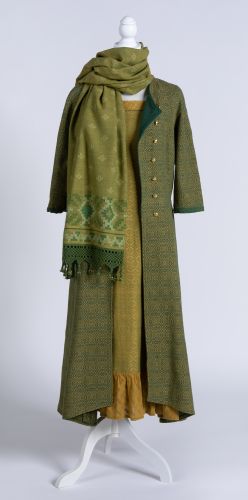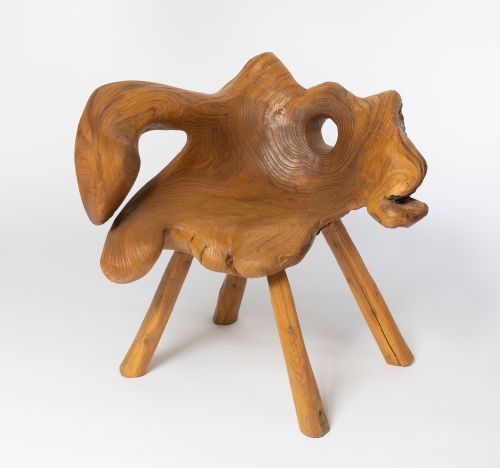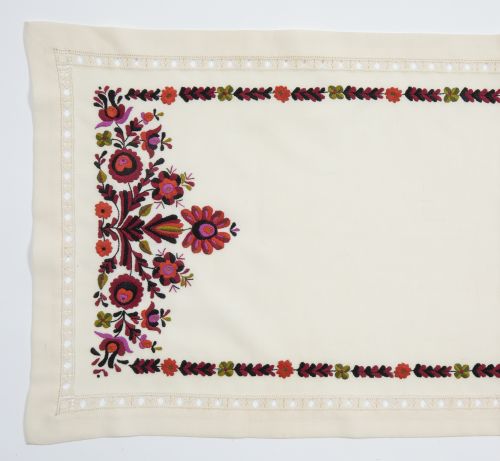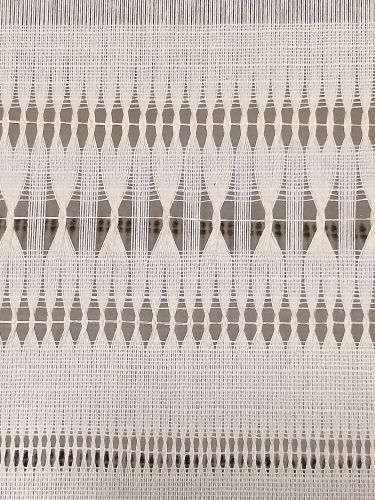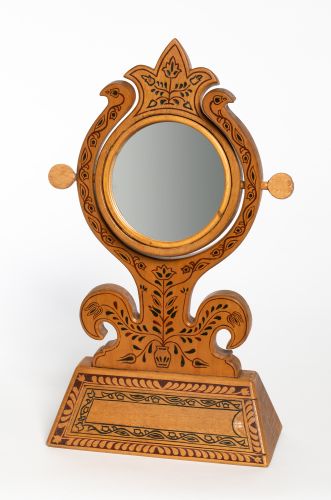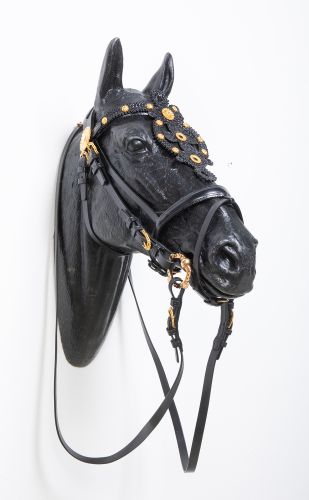Katalin Landgráf, Éva Penkala and Andrea Szittner
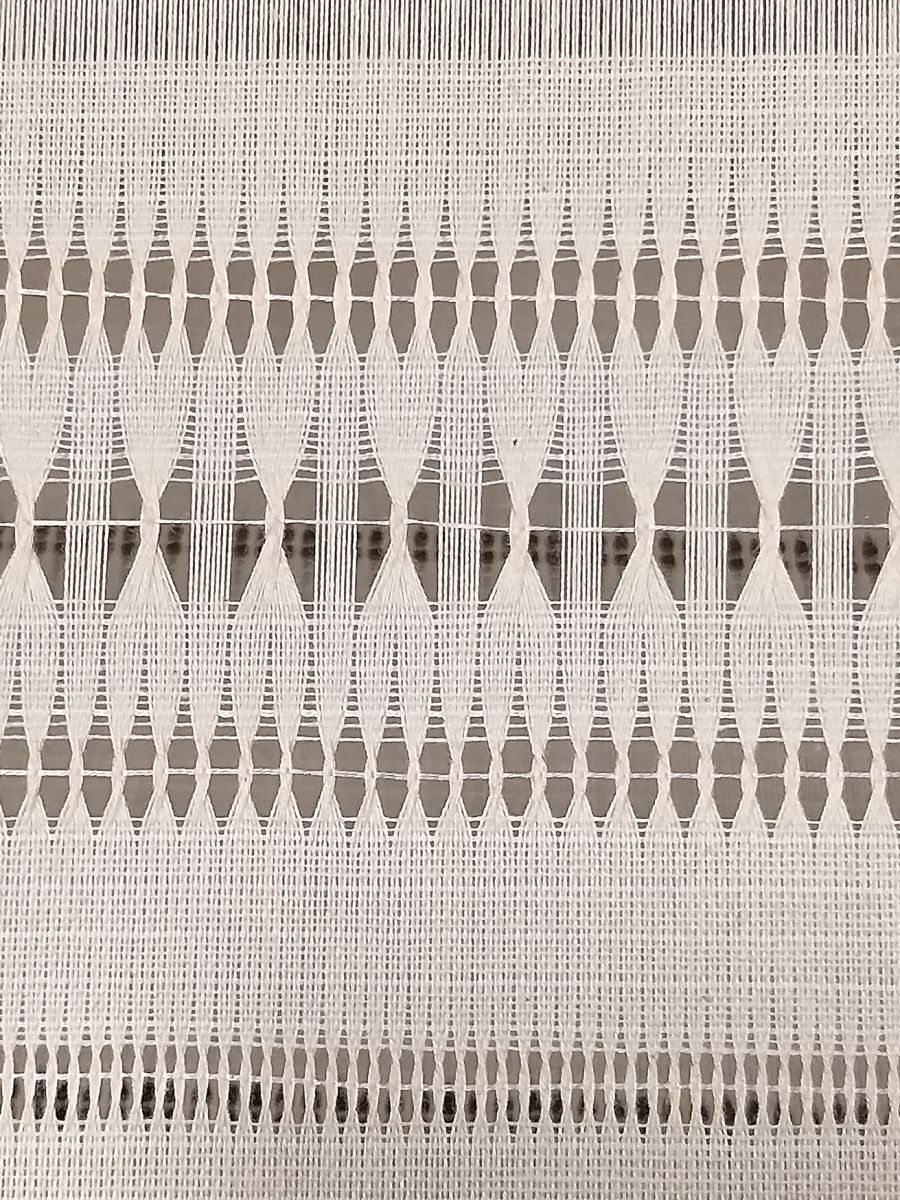
LANDGRÁF Katalin
“Hem-stitch variations” / 2022
hand-woven, plain weave and various hem-stitches, cotton, silk
Photo: MAROSI Eszter Anna
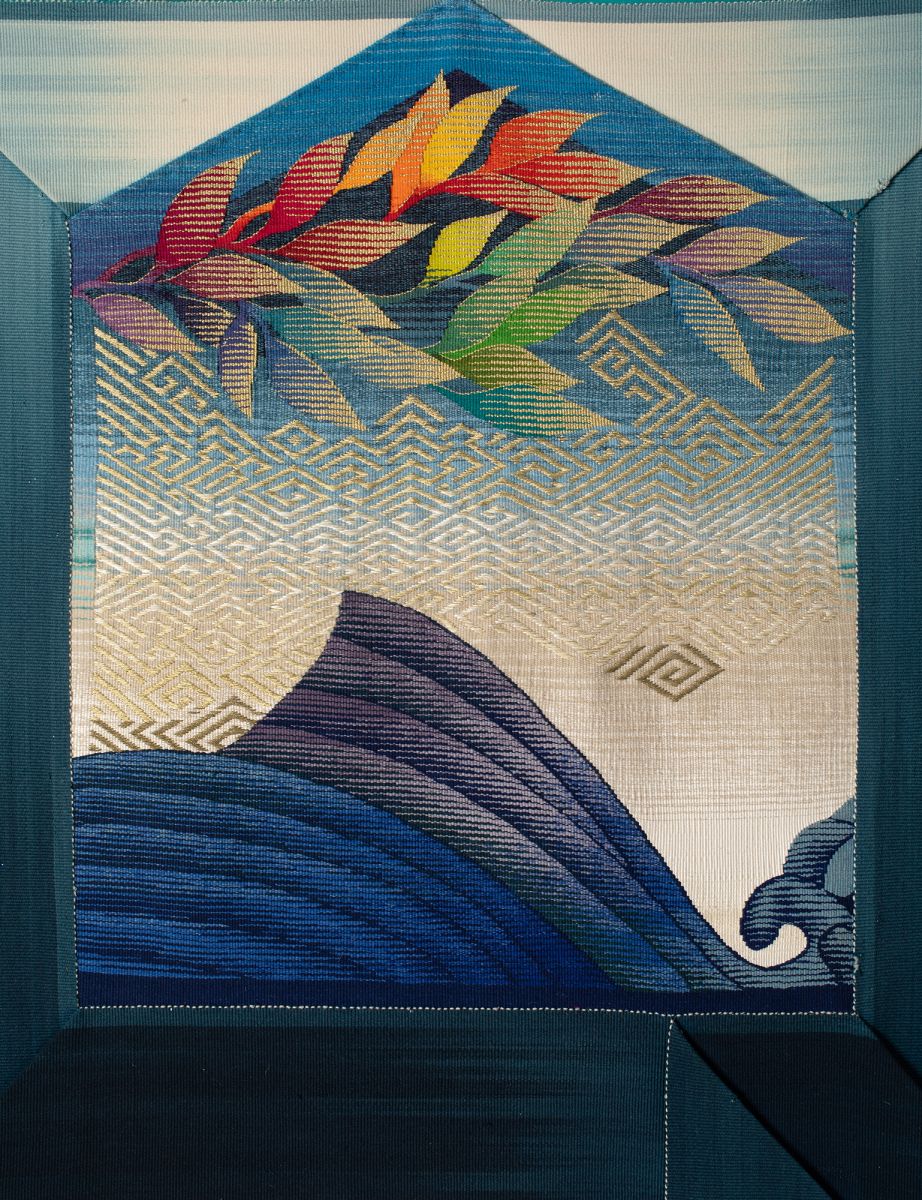
PENKALA Éva (1952–2022)
Transition “Key” / 1997
tapestry weaving, woven pattern, wool, silk, metal fbre, ikat (resist-dye) technique
owned by Andrea Szittner
Photo: SULYOK Miklós
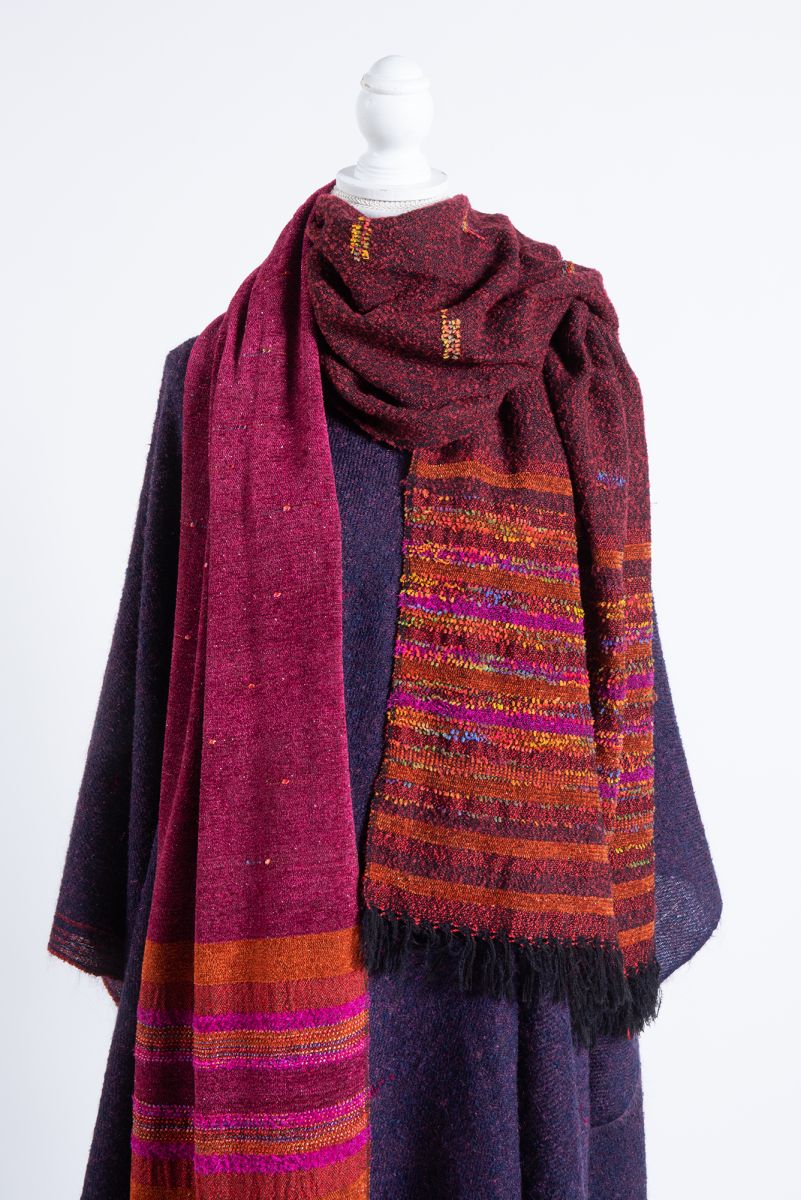
SZITTNER Andrea
Poncho and stola / 2016–2022
hand-woven, mixed media, various decorated and mixed yarns
Photo: SULYOK Miklós
Katalin Landgráf, Éva Penkala and Andrea Szittner all started from the same place: at the Secondary School of Visual Arts, where Éva Rónai was their teacher.
Katalin Landgráf found her professional challenge in the design of everyday textiles that are accessible to everyone, in which she presents a clear artistic vision that evokes and develops the universal solutions of Hungarian folk weaving.
As a member of the new generation of textile artists in the 1980s, Éva Pen kala stepped into the public eye as a renewer of upholstery art with her tangi ble, warm and thought-provoking textiles. To learn, to teach, to offer beauty – this was the purpose of her art and her life.
Andrea Szittner creates a connection with the people using her objects through the intricate processes of hand weaving, using signs and symbols, and the knowledge of an eternal tradition that spans generations, almost sa cralising the garments designed for the human body.
One of the most universal of crafs, weaving, is at the heart of their careers, but they have taken different paths – factory textile designer, mural designer artist, craf weaver – but they have had the same passion for teaching, the same passion for showing the wonderful world of textiles and weaving to their university students and secondary school pupils, to teachers in their further training courses, to everyone. Their shared commitment took shape in the Great Book of Weaving. It is intended as a handbook not to show how to make a particular object, but to provide readers with the history and practical application of the techniques, in addition to the fundamental skills.
Their apprentices not only come from the pupils they teach directly in schools, but also from the vast community of crafspeople reached by the books. Many have taken up weaving as a result of their books. As designers, educators, authors of craf publications and textbooks, they play a dominant role in the community of artists and crafspeople involved in weaving.
